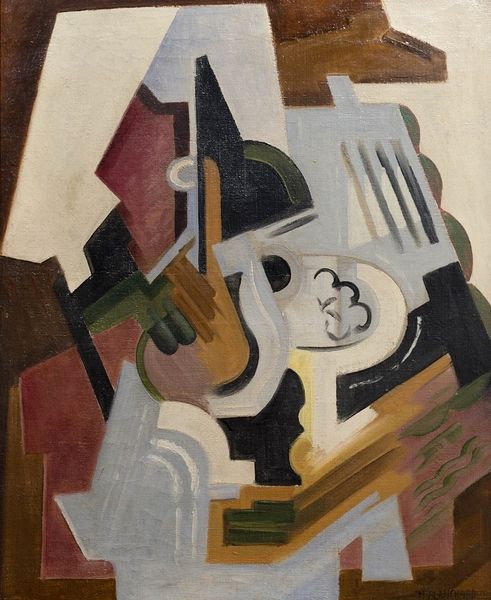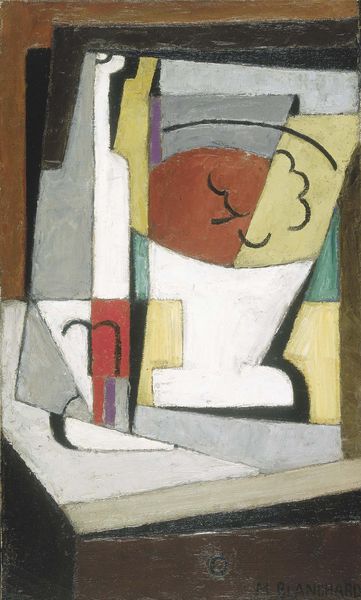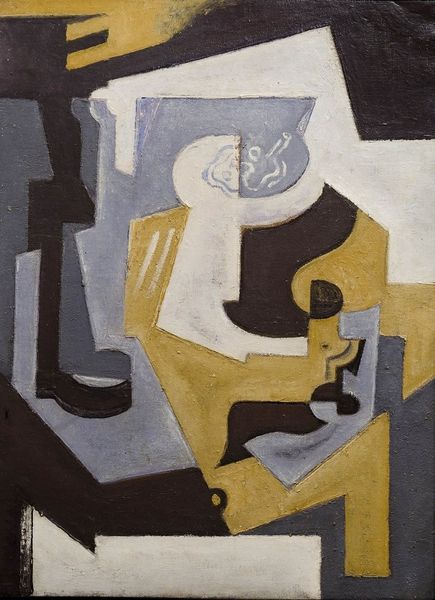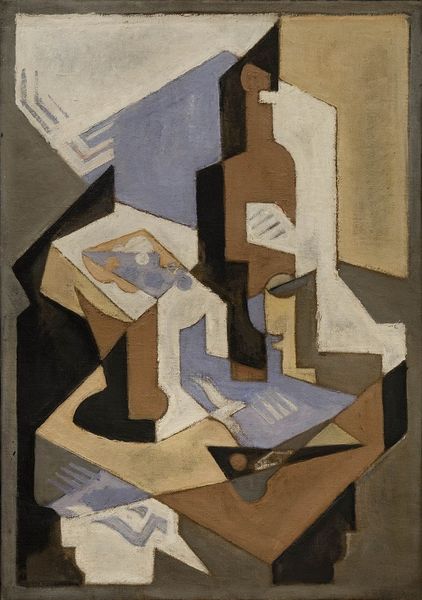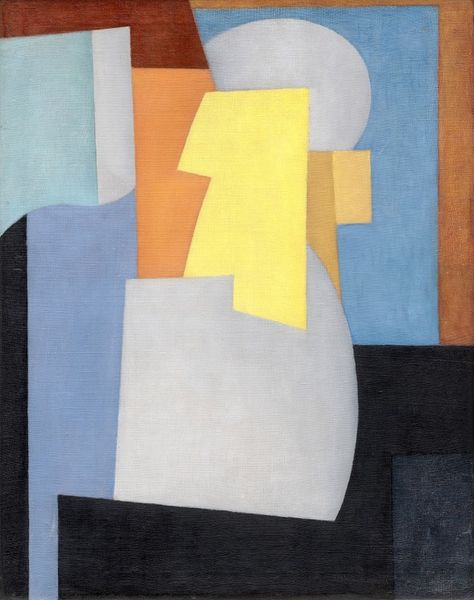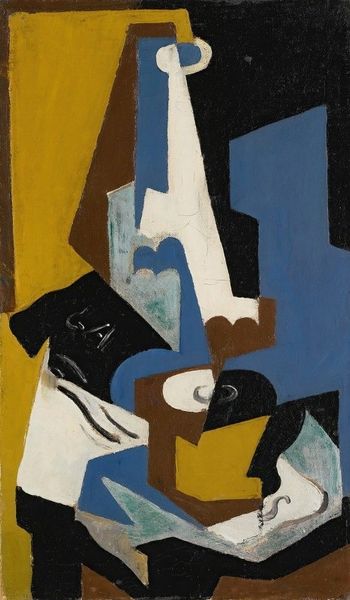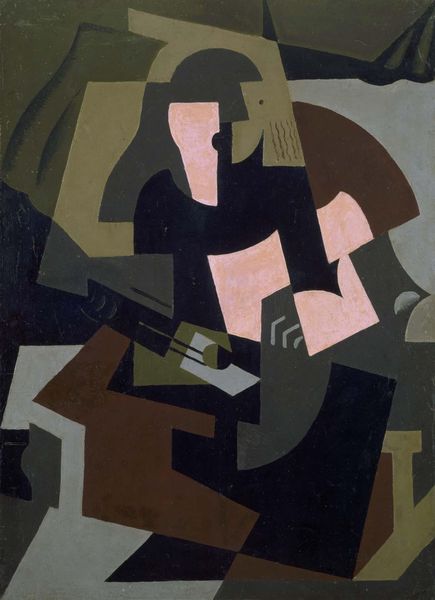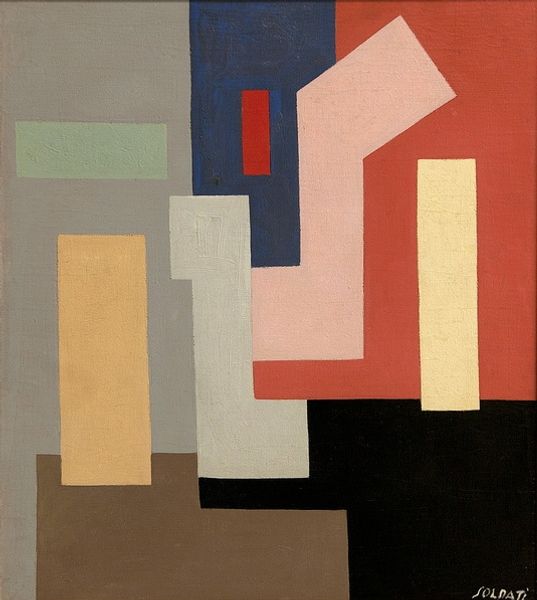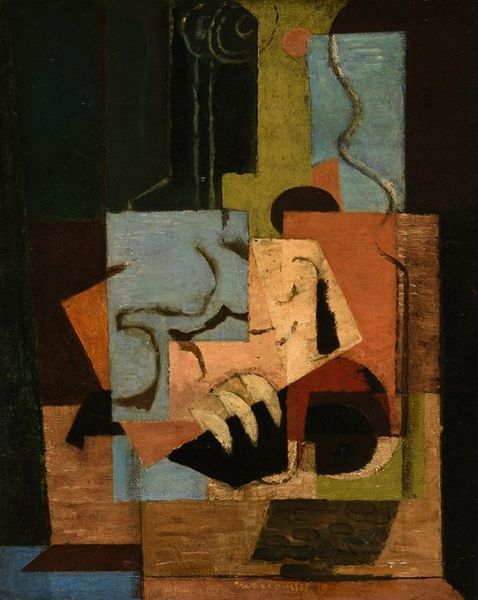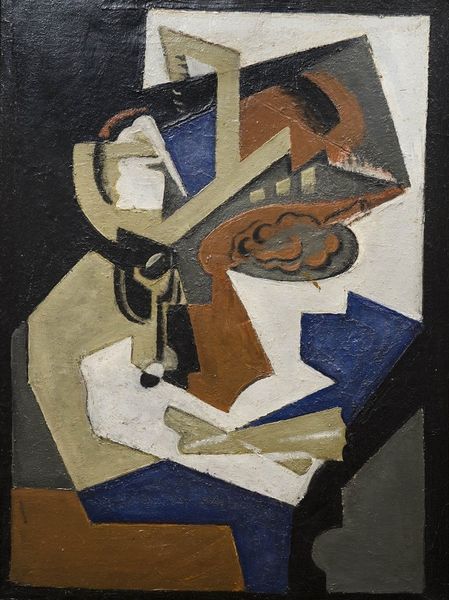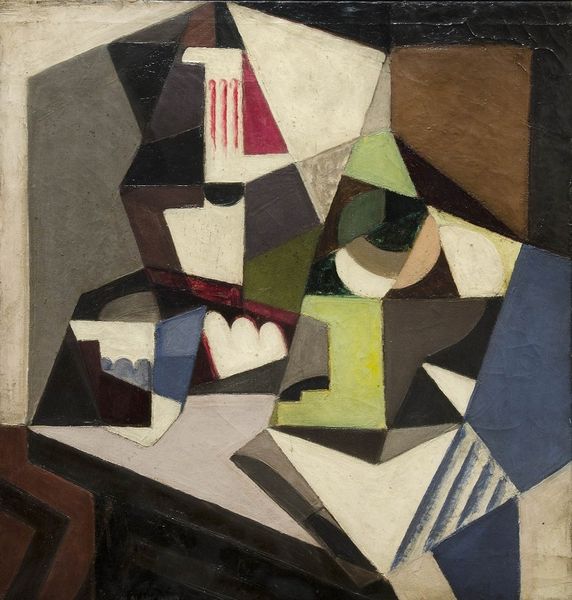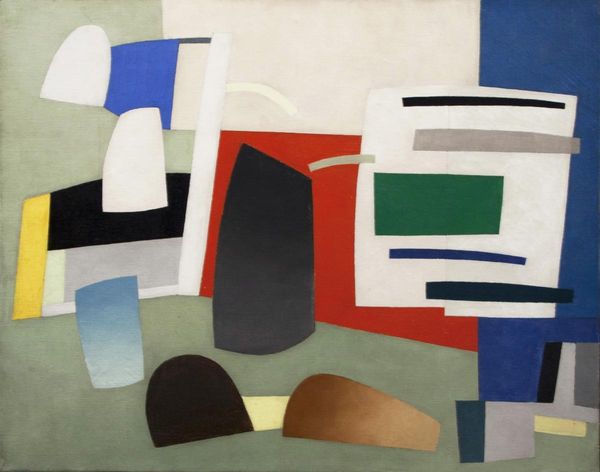
painting, oil-paint
#
cubism
#
abstract painting
#
painting
#
oil-paint
#
painted
#
oil painting
#
abstraction
#
modernism
Copyright: Public domain
Editor: This is María Blanchard’s "Naturaleza Muerta" from 1917, an oil painting that immediately strikes me with its muted tones and geometric shapes. It has such a segmented composition; what elements stand out to you? Curator: The painting provides a rather fascinating exploration of Cubist principles. Note how Blanchard dismantles the still life into a collection of fragmented forms. Do you observe how each plane seems to exist independently yet contributes to the overall structure? Editor: Yes, definitely. The objects—the bottle and the glass, maybe?—are recognizable, but simultaneously abstracted. How does she create that tension? Curator: The artist employs a limited palette, creating a harmony of tones, while the contrasting sharp angles and softer curves add to the visual interest. Consider the interplay between light and shadow. Where do you find the light sources within the composition? Editor: Hmm, there aren't any explicit light sources, but certain planes appear brighter than others, almost like they’re catching an invisible light. Curator: Precisely! This internal illumination highlights the abstract construction of form. Blanchard is clearly invested in a formal game, less interested in representing reality than in exploring the essence of objects through geometric simplification. It exemplifies a move toward pure painting. Editor: So, she's prioritizing the structure and the relationships between the shapes over faithful depiction. That really shifts my perspective. Curator: Indeed. Blanchard pushes us to analyze art through its inherent elements rather than its subject matter. It provides us a fascinating exercise in perception. Editor: This has made me look at Cubism in a whole new light, seeing it less as deconstruction and more as a reconstruction of form itself. Curator: Absolutely, and through this formal rigor, the work still manages to evoke a unique stillness, a testament to Blanchard's skill.
Comments
No comments
Be the first to comment and join the conversation on the ultimate creative platform.

